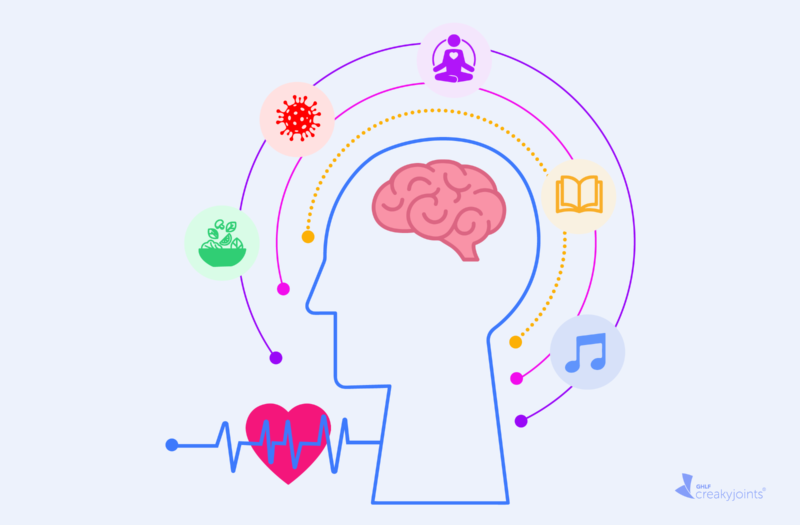Learn more about our FREE COVID-19 Patient Support Program for chronic illness patients and their loved ones.
My dentist promotes a six-month cleaning and checkup to make sure my dental hygiene is at its best. I like the idea (even if I don’t always practice it). Well, here we are, having recently passed the six-month pandemic mark — and it is time for a checkup with ourselves about how we are. How is our mental wellness? What kind of care do we need to take as we move into the next season?
It is an understatement to note that this is a challenging and difficult time. Many of us are carrying the stress of this uncertainty and difficulty in our bodies. We “stuff down” the stress, glide over how we are feeling, and just keep powering through.
Research shows that that kind of coping — termed “avoidant-based emotion-focused coping” — works okay in the first phases of a crisis. We need to be able to distract and even deny in order to have the energy to manage all that is happening.
But over the long term, that kind of coping becomes harmful. It leads to the stuffing or denying that weakens our ability to manage. It may even lead to depression or heightened anxiety.
So, what is recommended for long-term coping? It’s a combination of active emotion-based and problem-based coping.
What does that look like in our lives?
A client of mine is working on her emotion-based coping. Here’s what it looks like in everyday life.
Step 1: Acknowledge how you really feel
The first part of this practice involves her telling herself, and often a trusted other, how she really feels. She has to stop, ask herself the intentional question, and then listen for the response. She thinks of herself as an upbeat positive person who is always striving to be calm and cheerful, no matter what. It has been a revelation to allow herself to say such things out loud as: I’m scared. I’m angry. I’m frustrated.
Rather than denying or glossing over how hard she is finding this time, she is willing to dive in and admit the painful or negative emotions that are there along with her positive outlook. She recently confessed, “I am finally realizing both are true. I can feel all those horrible feelings, as well as the good ones, and they don’t cancel each other out, but can exist alongside each other.”
Step 2: Reduce negativity
The next part involves finding ways to reduce some of the negativity so that her body doesn’t have to carry it. The old adage “what we resist persists” applies here. When we resist our feelings — through denying or ignoring them — they will persist. When we bring them out into the air, recognize and name them, then the power of that feeling starts to fade. We cope through this strategy of naming and allowing the power of the negativity to dissolve rather than hang around.
Step 3: Reframe the feeling
We can also cope by “re-framing” the feeling. For example, this client noticed that every time she read about the pandemic, she felt fear about how likely she was to contract the illness due to her compromised immune system and underlying illness. She knew that she began painting a picture in her mind of how bad it would be when she got sick, and began to compound her fear by worrying about dying. She decided that she would notice the fear, and then take a deep breath, and remind herself that the fear was a feeling that was trying to protect her.
When she felt anxiety, she would notice that, again pause and take a breath, and then remind herself that she was OK. The anxiety was a physical reaction, and she had some control over it by breathing slowly, noticing her feet planted on the floor beneath her, and then imagining the anxiety moving out through her feet into the ground.
These practices are just that: ways to practice coping with our unruly emotions. At six months — and beyond — we continue to need to cope and de-stress.
The more we practice, the better we will feel.
Get Free Coronavirus Support for Chronic Illness Patients
Join the Global Healthy Living Foundation’s free COVID-19 Support Program for chronic illness patients and their families. We will be providing updated information, community support, and other resources tailored specifically to your health and safety. Join now.






